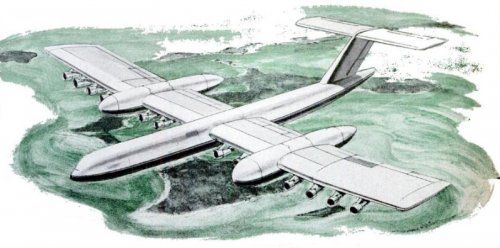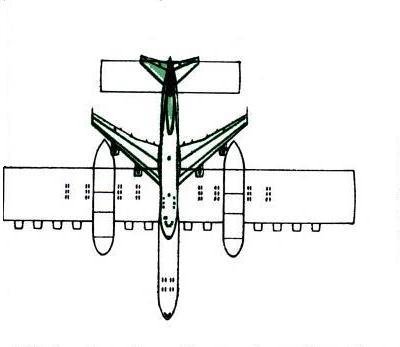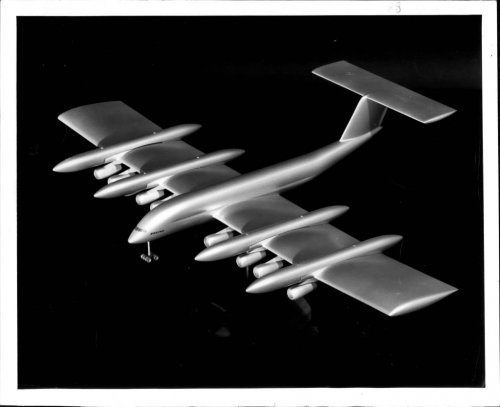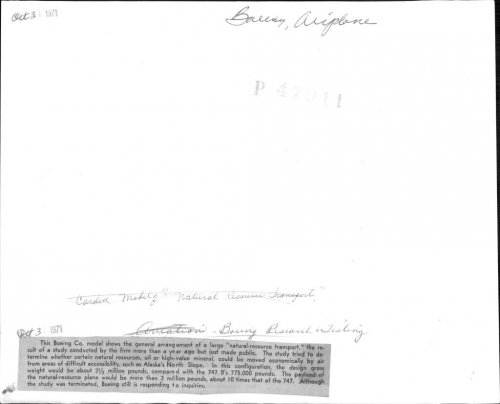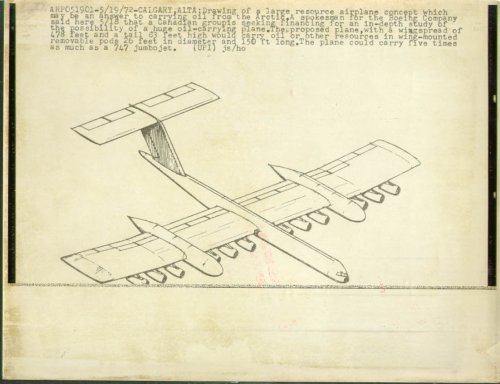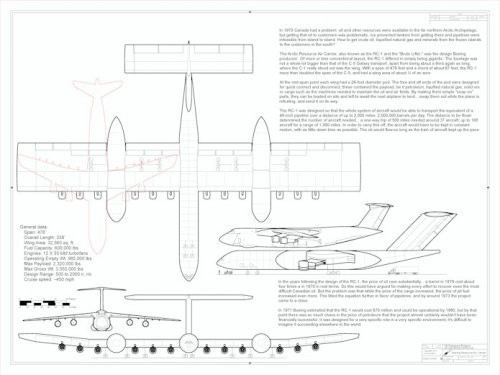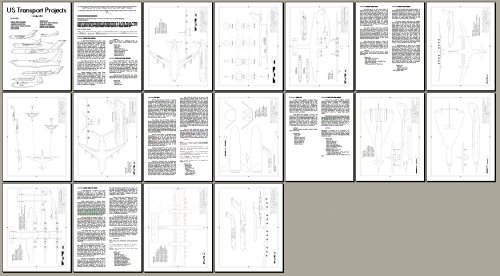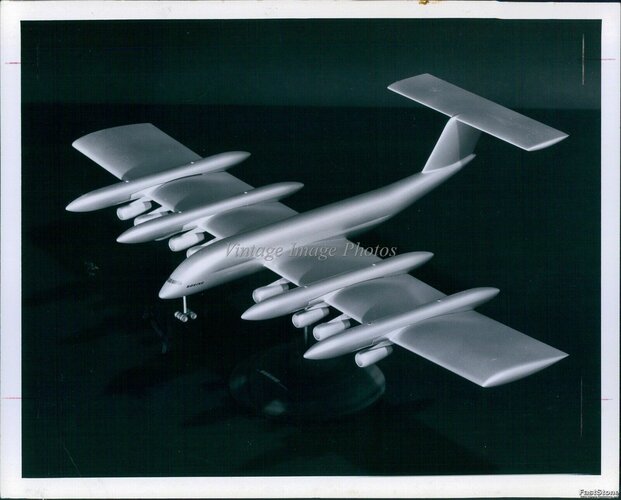The Boeing RC-1, for Resource Carrier 1, was a joint development project of Boeing and the Great Plains Project, a think tank created by the Canadian government under Prime Minister Pierre Elliott Trudeau to develop the country's Far North. Of particular interest was extracting oil, natural gas, and mineral ores from the Arctic Archipelago. The building of pipelines or roads between the frozen islands to transport these natural resources to an ice-free port or rail head was deemed unfeasible.
Planners envisioned round-the-clock operation of a fleet of 50 RC-1 resource carrier aircraft with each carrying 2.3 million pounds of cargo, such as 8,100 barrels of oil, in two wing-mounted detachable cargo pods. The system had to match the flow capacity of a 48-inch pipleline at comparable cost.
The aircraft would have been powered by 12 Pratt & Whitney JD9 turbofans for a cruise speed of 450 mph. 500 to 1,000 mile hauls were planned for the aircraft. Cargo would then be transported by ship or rail to southern markets. Wingspan was 478 feet, 87 feet tall, and the aircraft would ride on 56 wheels!
Because of its large size and cargo carrying capacity, the aircraft was nicknamed the "Brute Lifter" and "Flying Pipeline." Each aircraft was expected to cost $70 million.
Line drawings of this aircraft have appeared in other topics from sources such as Flight International and NASA technical reports
Artist's impression (top) of Boeing RC-1 resource carrier.
Line drawing (bottom) comparing the dimensions of the Boeing RC-1 to the Boeing 747.
Source: Wahl, Paul "What Has 56 Wheels and Flies? The World's Largest Aircraft" Popular Science October 1972
http://books.google.com/books?id=psqW_3WpLaMC&pg=PA97&dq=Boeing+RC-1+resource+carrier&cd=1#v=onepage&q=Boeing%20RC-1%20resource%20carrier&f=false
Planners envisioned round-the-clock operation of a fleet of 50 RC-1 resource carrier aircraft with each carrying 2.3 million pounds of cargo, such as 8,100 barrels of oil, in two wing-mounted detachable cargo pods. The system had to match the flow capacity of a 48-inch pipleline at comparable cost.
The aircraft would have been powered by 12 Pratt & Whitney JD9 turbofans for a cruise speed of 450 mph. 500 to 1,000 mile hauls were planned for the aircraft. Cargo would then be transported by ship or rail to southern markets. Wingspan was 478 feet, 87 feet tall, and the aircraft would ride on 56 wheels!
Because of its large size and cargo carrying capacity, the aircraft was nicknamed the "Brute Lifter" and "Flying Pipeline." Each aircraft was expected to cost $70 million.
Line drawings of this aircraft have appeared in other topics from sources such as Flight International and NASA technical reports
Artist's impression (top) of Boeing RC-1 resource carrier.
Line drawing (bottom) comparing the dimensions of the Boeing RC-1 to the Boeing 747.
Source: Wahl, Paul "What Has 56 Wheels and Flies? The World's Largest Aircraft" Popular Science October 1972
http://books.google.com/books?id=psqW_3WpLaMC&pg=PA97&dq=Boeing+RC-1+resource+carrier&cd=1#v=onepage&q=Boeing%20RC-1%20resource%20carrier&f=false

